Sending data to Slack channel from your app
Bài đăng này đã không được cập nhật trong 6 năm
This is the part two of our ongoing series on creating a complete Slack app and connecting with our rails app.
- Module#1 Introduction
- Module#2 Slack Web Hooks (sending data from your project to Slack)
- Module#3 API creation, Slash commands (sending data from Slack to your project)
- Module#4 Slack custom forms (sending data from Slack to your project interactive way)
- Module#5 Creating Slack Bot (posting message to Slack as a bot user)
- Module#6 Handling installation of your custom app to user's Slack Channel
- Module#7 Releasing yout app in Slack Store
Creating a slack app
Go to api.slack.com and create a slack app for yourself.
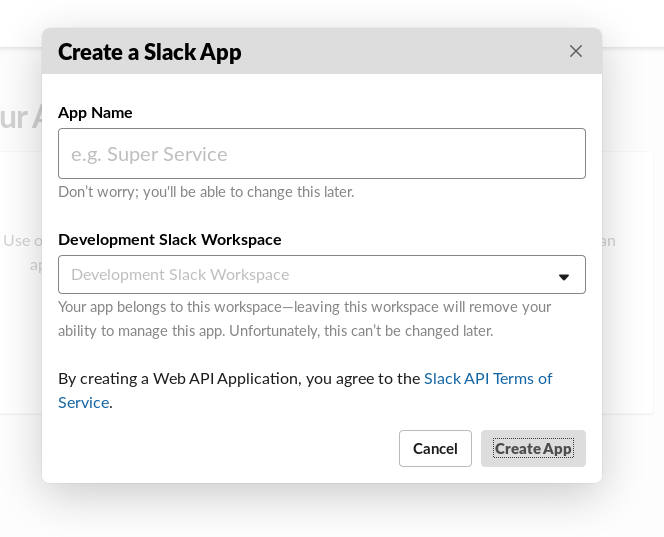
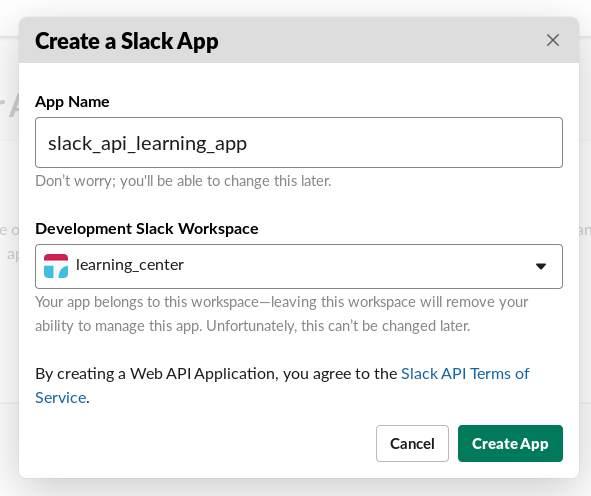
After you're done, you'll be greeted with the control panel of the app.

Now we need to enable the WebHook feature for the app.
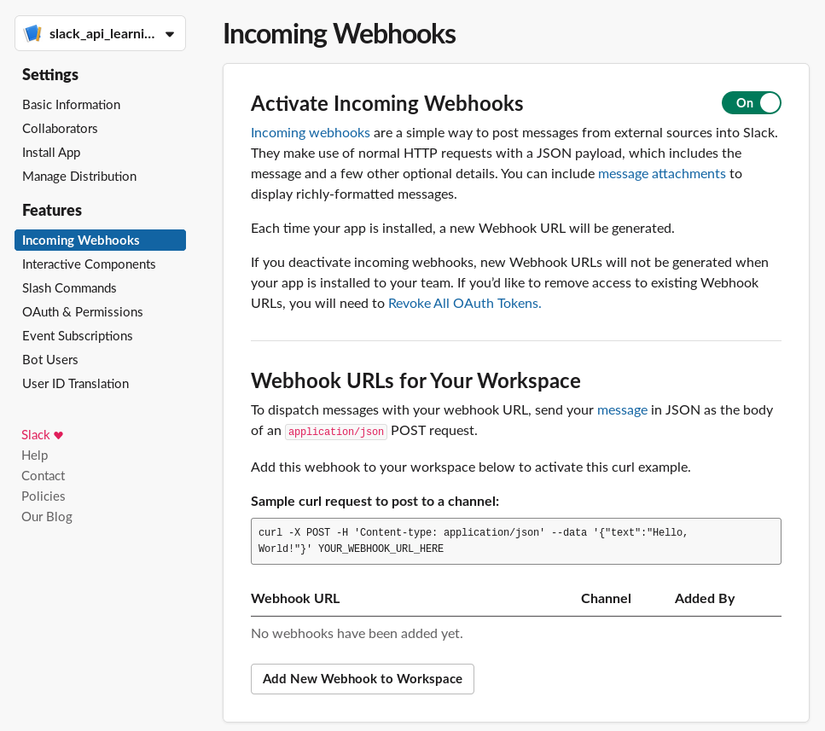
when you try to enable it, you'll be asked to select which workspace your app is connecting with.
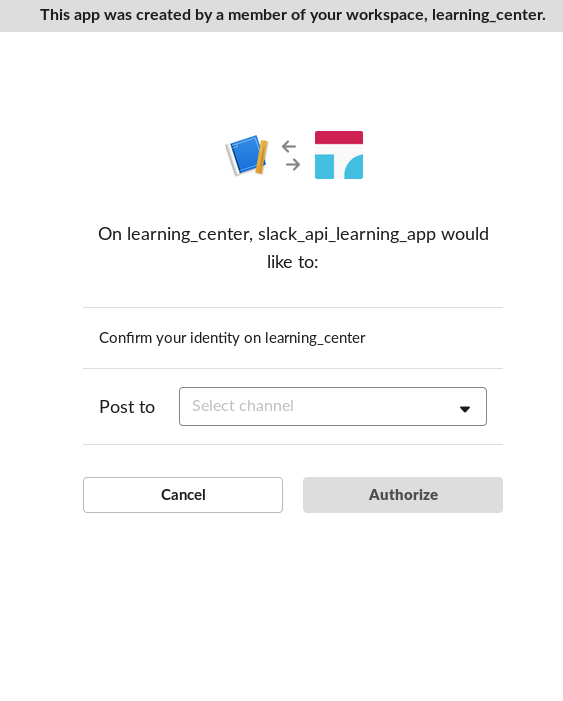
Now, we are done configuring from Slack side. Simple as that.
You'll be given the post url where you'll send your api call. Just send a post message on the url on this structure {text: "your message"} and you'll get the message posted on Slack.
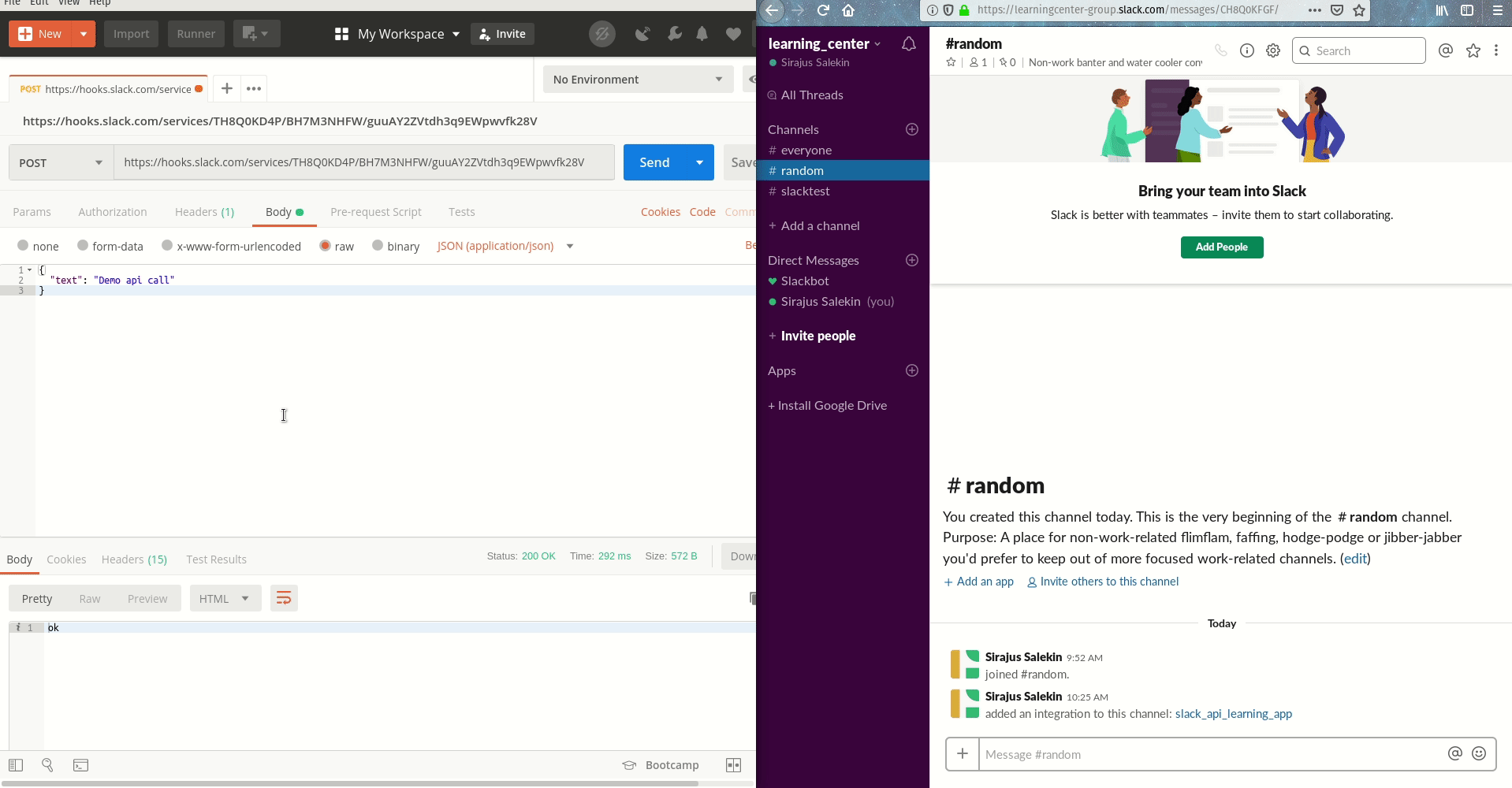
Creating the todo app
Just a basic todo app, which sits behind devise authentication. Enabling devise authentication should be easy enough for you guys to google, so I'm skipping that part.
Now, lets create a Task model using the scaffold command.
rails g scaffold Task title start:datetime end:datetime done:boolean
We will modify the TasksControllerto call on the webhook whenever we do any action.
So, lets create a class ExternalApiCaller to post on the SlackWebhook for us.
require "net/http"
require "uri"
require "json"
class ExternalApiCaller
def call uri, data
uri = URI.parse uri
request = Net::HTTP::Post.new(uri)
req_options = { use_ssl: uri.scheme == "https" }
request.content_type = "application/json"
request.body = JSON.dump(data)
response = Net::HTTP.start(uri.hostname, uri.port, req_options) do |http|
http.request(request)
end
return response.body
end
end
Here's a demo of it in action.
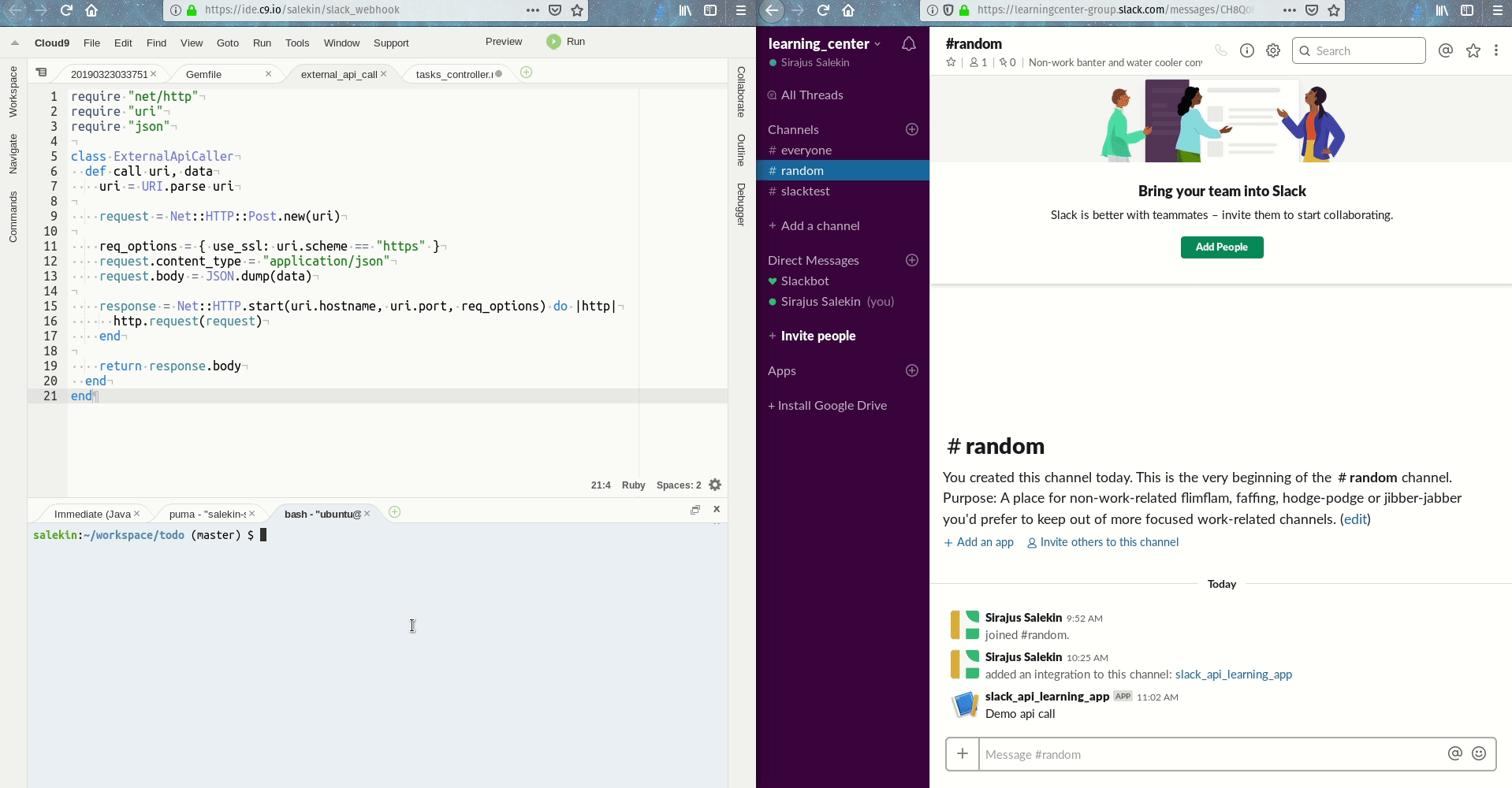
Now we modify our controller to fire this method whenever CRUD actions were done.
require "./app/services/external_api_caller"
class TasksController < ApplicationController
before_action :authenticate_user!
before_action :set_task, only: [:show, :edit, :update, :destroy]
URI = "https://hooks.slack.com/services/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"
# GET /tasks
# GET /tasks.json
def index
@tasks = Task.all
end
# GET /tasks/1
# GET /tasks/1.json
def show
end
# GET /tasks/new
def new
@task = Task.new
end
# GET /tasks/1/edit
def edit
end
# POST /tasks
# POST /tasks.json
def create
@task = Task.new(task_params)
respond_to do |format|
if @task.save
format.html { redirect_to @task, notice: 'Task was successfully created.' }
format.json { render :show, status: :created, location: @task }
send_slack_notification(
["#{current_user} created a new task: `#{@task.title}`",
"\n", "#{@task.get_url}"].join)
else
format.html { render :new }
format.json { render json: @task.errors, status: :unprocessable_entity }
end
end
end
# PATCH/PUT /tasks/1
# PATCH/PUT /tasks/1.json
def update
respond_to do |format|
if @task.update(task_params)
format.html { redirect_to @task, notice: 'Task was successfully updated.' }
format.json { render :show, status: :ok, location: @task }
send_slack_notification(
["#{current_user} has updated task: `#{@task.title}`",
"\n", "#{@task.get_url}"].join)
else
format.html { render :edit }
format.json { render json: @task.errors, status: :unprocessable_entity }
end
end
end
# DELETE /tasks/1
# DELETE /tasks/1.json
def destroy
title = @task.title
@task.destroy
respond_to do |format|
format.html { redirect_to tasks_url, notice: 'Task was successfully destroyed.' }
format.json { head :no_content }
end
send_slack_notification("#{current_user} has removed the task:`#{title}`")
end
private
# Use callbacks to share common setup or constraints between actions.
def set_task
@task = Task.find(params[:id])
end
def send_slack_notification message
return unless message.present?
eac = ExternalApiCaller.new
eac.call URI, {text: message}
end
# Never trust parameters from the scary internet, only allow the white list through.
def task_params
params.require(:task).permit(:title, :description, :start, :end, :done)
end
end
And we're done !
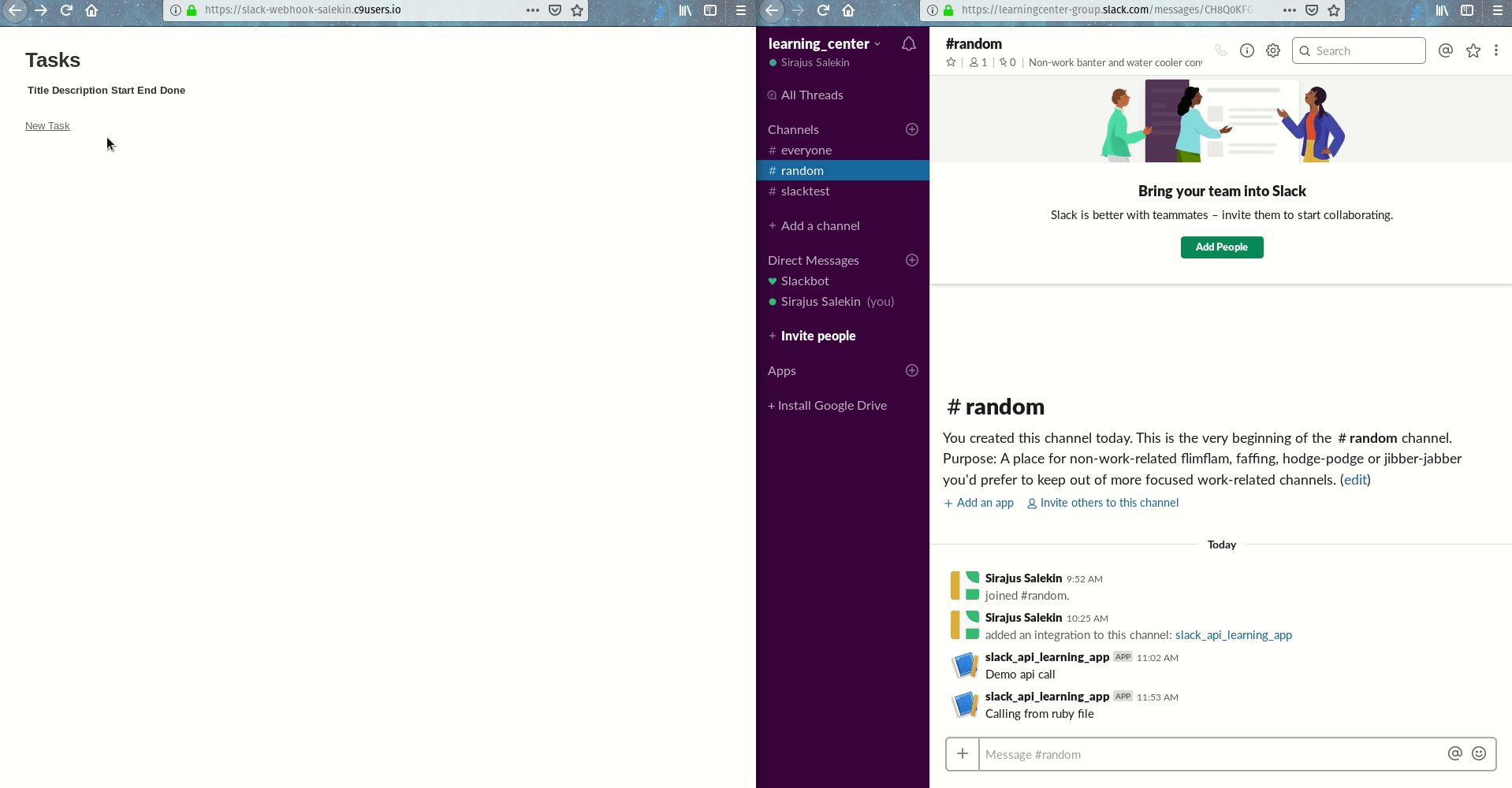
Here's the workspace for the app c9.io/salekin.slack_webhook.
and here's the git repo.
Finishing thoughts
We could improve upon the app with adding Activity gem and call our ExternalApiCaller on each activity
Reference Material
All rights reserved